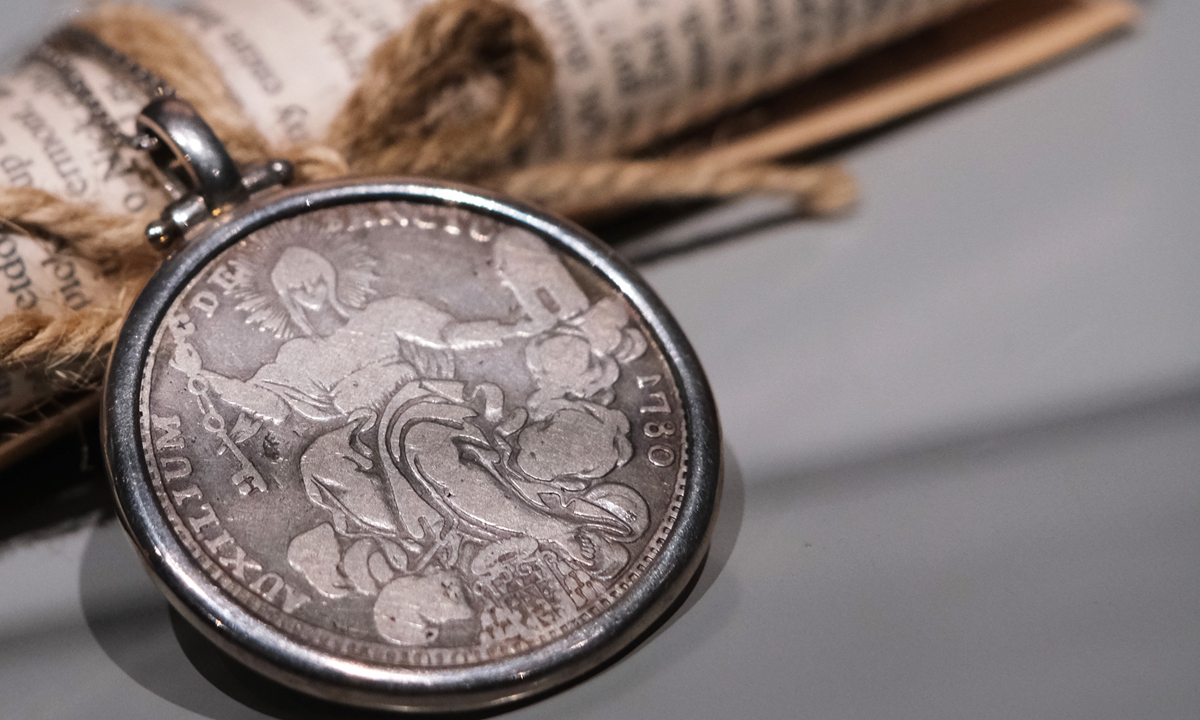Rare gold and silver coins discovered along Silk Road on display at Zhejiang Provincial Museum
Source: Global Times Published: 2020/9/15 18:43:40

A coin of ancient Rome Photo: IC
More than 700 rare and valuable gold and silver coins that demonstrate the prosperity of the Silk Road went on display at the Zhejiang Provincial Museum on Tuesday.
The coins were cast between the 7th century BC to the 19th century by ancient nations along the Silk Road, including ancient India and Greece, the Roman Empire and Persia. The coins were collected from various sources by the museum and the China Numismatic Society, according to a report from Chinese news outlet The Paper.
Some of the oldest coins on display are from the Kingdom of Lydia, the earliest nation along the Silk Road to cast gold and silver coins.
Some of the silver coins from Lydia feature a bull and lion facing each other one and numbers on the oldest silver coins in the world. The king who ordered the coins be cast was Croesus, the very same Croesus mentioned in the English expression "as rich as Croesus."
A silver coin from Athens in ancient Greece can also be seen in the exhibition. The front side of the coin is a portrait of Athena, patron saint of Athens. The coin, which was the principal currency of Athens at its height, also sports an olive wreath to commemorate the victory of the Greeks over the army of Xerxes I of Persia.
According to The Paper, starting from the 2nd century BC, Chinese commodities such as silk, tea and lacquer and products like glass and precious stones from the Mediterranean region and India constantly flowed back and forth along this trade route. These golden and silver coins stood witness to this flourishing trade.
Posted in: ART,ARTS FOCUS